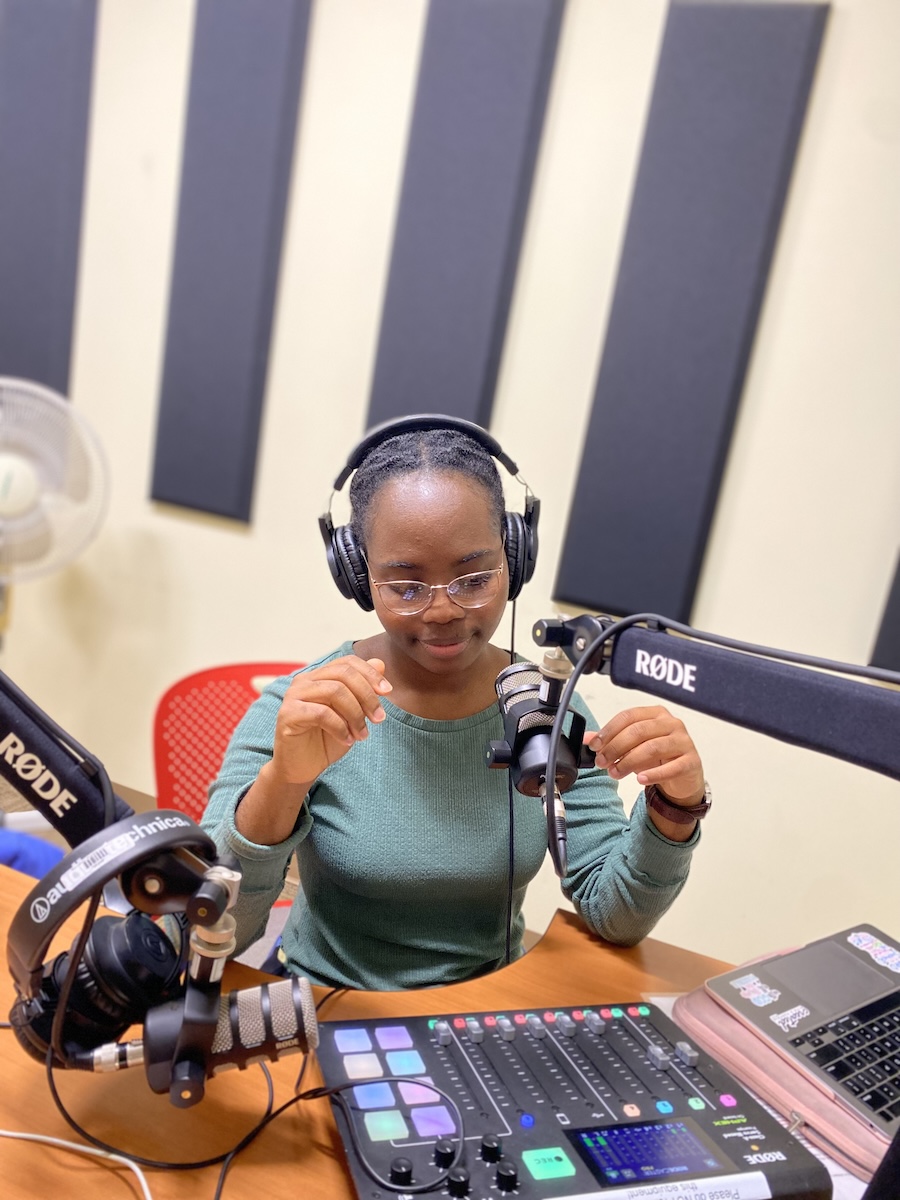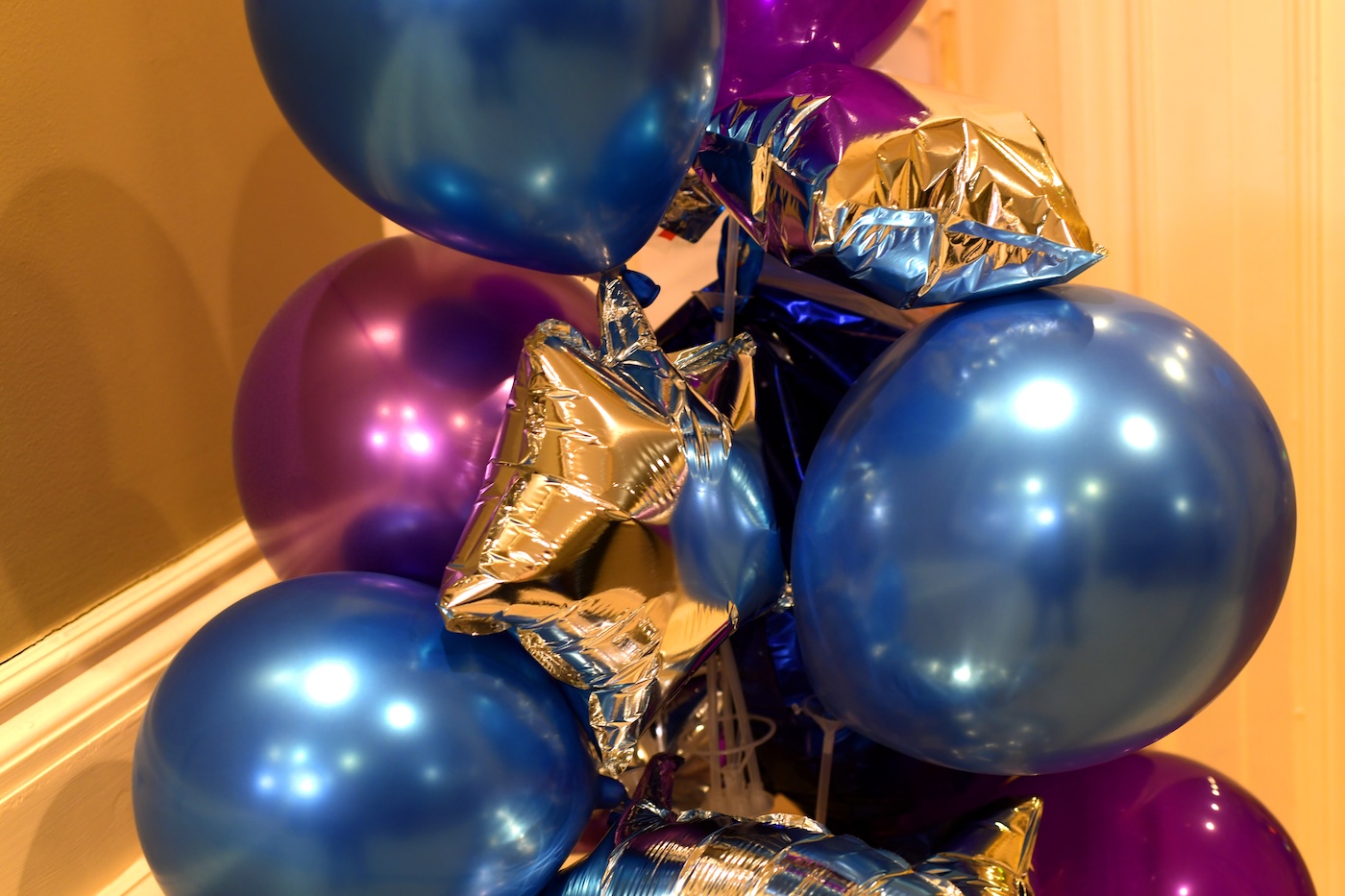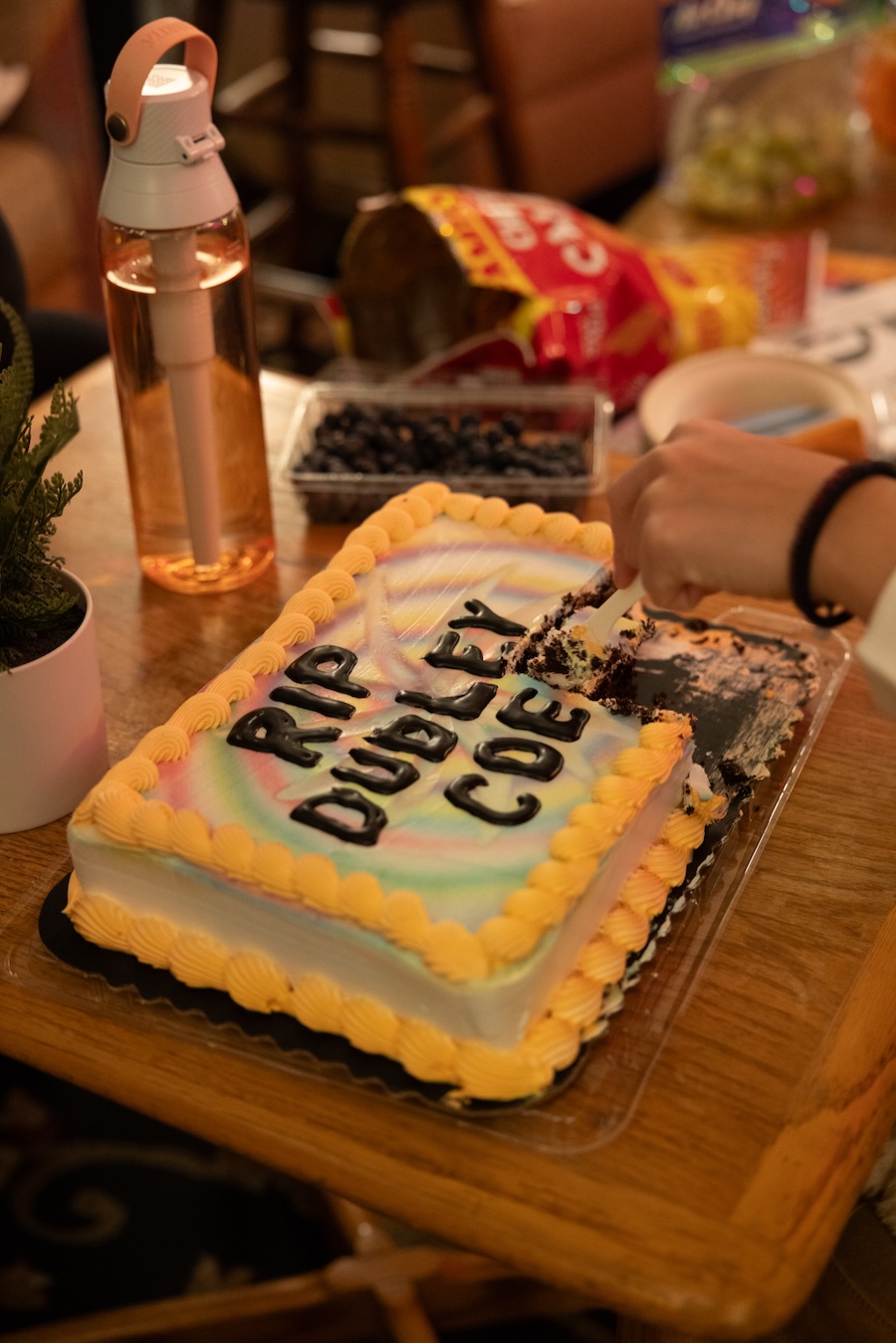Eating the Invader: Alicia Edwards '21 Helps Develop Green Crab Fisheries
By Cameron Chertavian ’20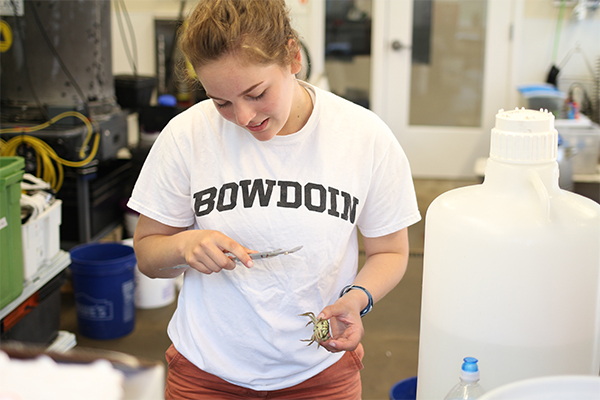
At the Schiller Coastal Studies Center, Alicia Edwards ’21 is creating a solution for a difficult problem. The invasive European green crab has become increasingly destructive in Casco Bay, being linked to declines in eelgrass, soft-shell clams, and saltmarsh habitats. Edwards hopes to turn them from nuisance to high-end delicacy. “What we are trying to do is find them at the certain point in their molting stage where we could fry them, and sell them for about $25 to $50 a pound,” Edwards said.
Edwards, a recipient of the Doherty Coastal Studies Research Fellowship, works in collaboration with local environmental nonprofit Manomet Conservation group. Their goal is to control the green crab population by making them economically viable for catch and sell. In the long run, this involves cultivating a new fishery, but the entire project depends on fishermen’s ability to tell when a crab is about to molt. This can be surprisingly difficult.
This is where Edwards comes in. She spends her days collecting and cataloging crabs, looking carefully for signs that point to molting. “If they are pre-molt, they have little lines on their abdominal platelets,” Edwards said. “When the fisherman start [collecting crabs], and hopefully they will, they won’t have to figure all this out themselves. We will know for them.”
Edwards’ time is divided between the coast and the wet lab. Twice a week, she heads out to six locations along Casco Bay. She collects only 25 crabs from each location to keep her workload manageable. “It really depends on the tides if we can get into these certain points,” explained Edwards.
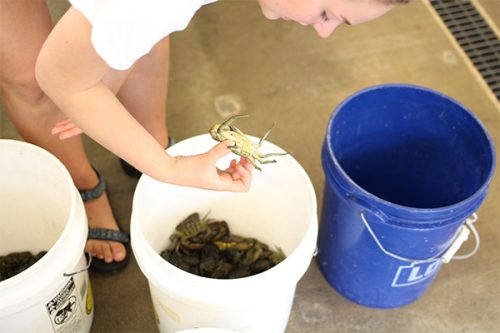
In the lab, Edwards measures each crab and enters them into a running census, taking note of various molting signs. If she identifies a potentially molting crab, she places it in one of the wet lab’s sea tables for further observation. Only recently have scientists thought to track their moulting cycle in order to address invasiveness. “Nobody knew to look at their molting patterns before,” said Edwards. “People only started to look at [them] a few years ago. That is the main barrier to whether or not fisherman can catch them.”
Edwards may be on the cutting edge of population control, but she is new to this realm of work. As a first year, she heard about the project from a friend and reached out to the director of the Schiller Coastal Studies Center, Dave Carlon. Despite her lack of background knowledge, she was welcomed into the program. “It is kind of crazy. I hadn’t taken introductory biology [at Bowdoin], only AP biology in high school.” Edwards explained. “Everyone is really open to helping me learn anything I don’t remember.”
Edwards is from Louisiana, and the Maine coast provides her with an opportunity to explore something new. “At home, I was near the water all the time, but never went towards it much,” Edwards said. “It is really nice to be out on the water almost every single day.”
Edwards has yet to sample a fried green crab and looks forward to the day she does. For now, she is happy to enjoy Casco Bay and help develop the fledgling crab fishery. “It is nothing like I have done before, and it is really fun,” she said. “Even though the crabs are kind of vicious. They pinch me all the time.”

